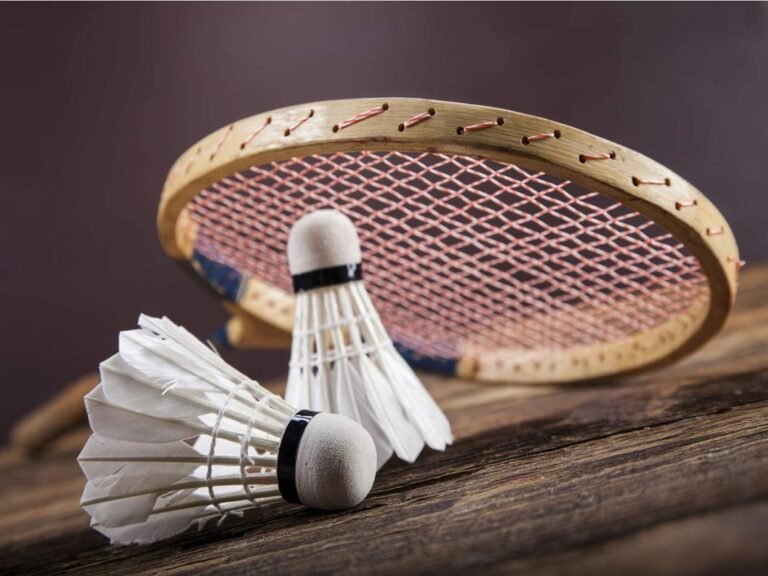
Introduction to Badminton Design
Badminton is much more than just a game; it’s a blend of skill, strategy, and precision. While most people focus on the players’ techniques and athleticism, the design aspects of badminton equipment and court layout play a crucial role in shaping the sport. From the intricacies of racket design to the layout o Badminton Design, every element is meticulously crafted to enhance performance, safety, and enjoyment. This blog delves into the fascinating world of badminton design, tracing its evolution, the impact of technology, and what the future holds.
Evolution of Badminton Equipment Design
Historical Overview
The origins of badminton can be traced back to ancient civilizations in India and Greece, where a similar game called “battledore and shuttlecock” was played. However, it wasn’t until the 19th century that the modern form of badminton began to take shape in British India. The early equipment was rudimentary, with wooden rackets and feathered shuttlecocks made from natural materials.
Racket Design
Initially, badminton rackets were constructed from wood, which made them heavy and less maneuverable. Over time, designers experimented with lighter materials like aluminum and steel, eventually settling on carbon fiber and graphite composites. These materials offer a perfect balance of strength, flexibility, and weight, significantly improving players’ performance.
Shuttlecock Design
The design of shuttlecocks has also seen remarkable changes. Traditional shuttlecocks were made from feathers, typically sourced from geese. While feather shuttlecocks are still used in professional games for their flight stability, synthetic shuttlecocks have become popular for recreational play due to their durability and cost-effectiveness.
Other Gear
Beyond rackets and shuttlecocks, other gear like shoes, grips, and strings have also evolved. Modern badminton shoes are designed with advanced cushioning and grip technology to prevent injuries and enhance agility. Similarly, grips and strings have been optimized for better control and power.
The Role of Technology in Badminton Design
Materials and Manufacturing
The advent of new materials like carbon fiber, titanium, and advanced polymers has revolutionized badminton equipment design. These materials offer superior durability and performance, making the gear more reliable and effective.
Design Software
Computer-Aided Design (CAD) software has enabled designers to create highly precise and optimized badminton equipment. This technology allows for intricate simulations and stress tests, ensuring that the final product meets the highest standards of performance and safety.
Data Analytics
Data analytics tools are increasingly being used to analyze player performance and equipment effectiveness. By studying metrics like swing speed, impact force, and shuttlecock trajectory, designers can make data-driven improvements to badminton gear.
Innovative Badminton Court Designs
Traditional Layouts
The standard badminton court measures 13.4 meters in length and 6.1 meters in width for doubles, with a net height of 1.55 meters. While this layout has remained relatively unchanged, the materials and surface types have evolved. Traditional wooden floors have given way to synthetic surfaces that offer better shock absorption and grip.
Modern Innovations
Recent years have seen the emergence of innovative court designs aimed at making the game more accessible and exciting. Portable and modular courts are becoming popular, allowing for easy setup in various locations. Additionally, LED lighting and digital scoreboards are being integrated to enhance the viewing experience for spectators.
The Future of Badminton Design
Smart Equipment
The future of badminton design is likely to be dominated by smart equipment. Imagine rackets with built-in sensors that provide real-time feedback on your swing, or shuttlecocks equipped with GPS trackers to analyze flight patterns. These innovations could offer unprecedented insights into player performance and training effectiveness.
Sustainable Materials
As sustainability becomes a global priority, the use of eco-friendly materials in badminton equipment is expected to rise. Biodegradable shuttlecocks and rackets made from recycled materials could become the norm, reducing the sport’s environmental footprint.
Virtual Reality and Augmented Reality
Virtual Reality (VR) and Augmented Reality (AR) technologies have the potential to revolutionize badminton training and gameplay. VR could offer immersive training environments, while AR could provide real-time tactical information during matches, enhancing both player performance and spectator engagement.
Customization and Personalization
With advancements in 3D printing and AI, customized badminton equipment tailored to individual players’ needs could become widely available. This level of personalization could help players maximize their strengths and minimize their weaknesses, leading to a higher level of competition.
Conclusion
The design of badminton equipment and courts has come a long way from its humble beginnings. Today, state-of-the-art materials, cutting-edge technology, and innovative designs are shaping the future of the sport. Understanding the importance of good design not only enhances the playing experience but also attracts new players, fostering the growth of badminton globally.
As we look to the future, the potential for further advancements in badminton design is limitless. Whether you’re a seasoned player or just starting, keeping an eye on these trends can offer valuable insights into how the game will evolve.
Stay ahead of the curve and be part of this exciting journey. Let’s embrace the future of badminton design together, making the game more exciting, accessible, and sustainable for everyone.